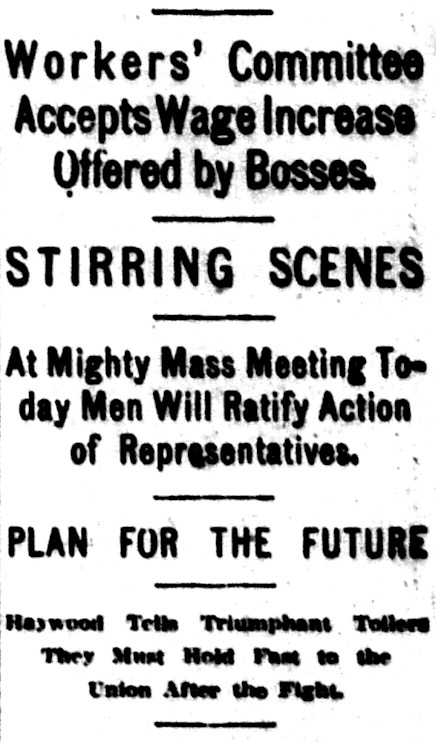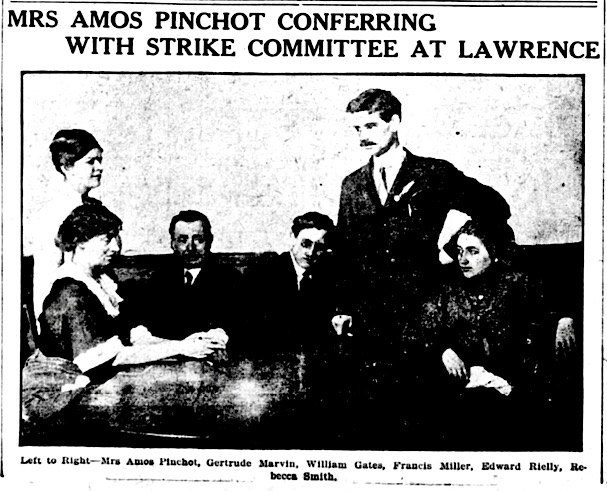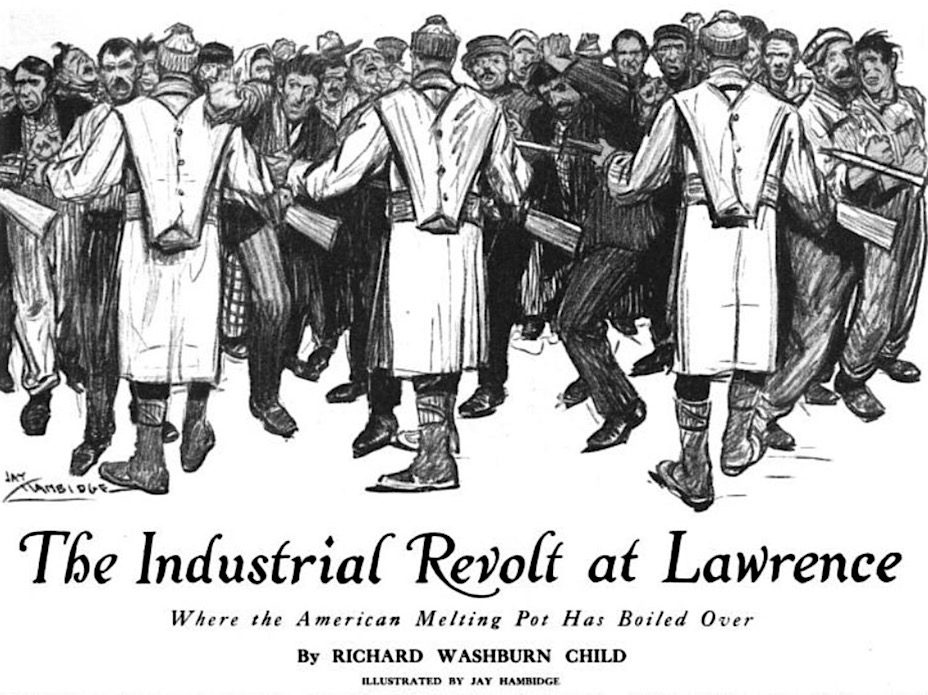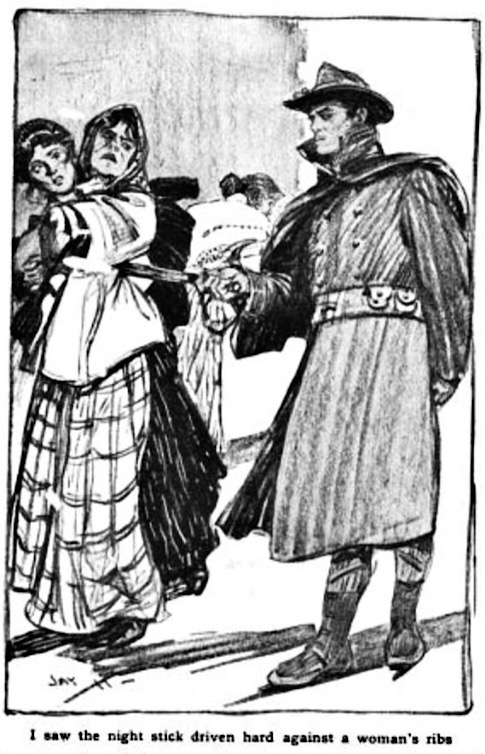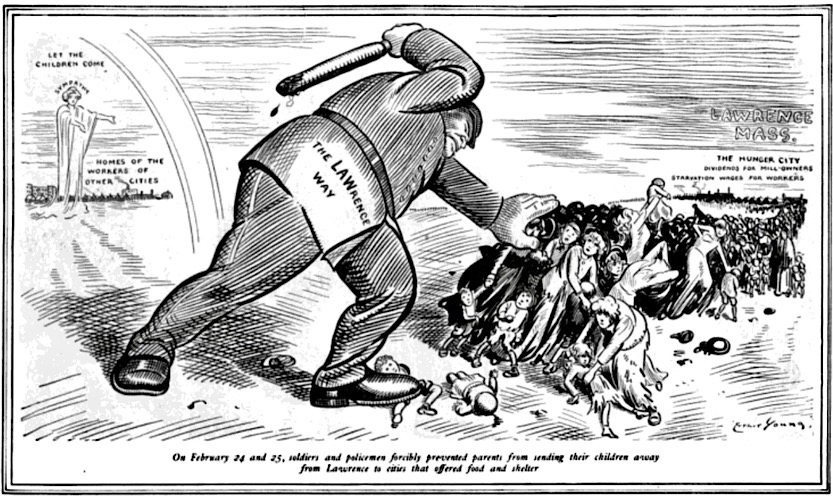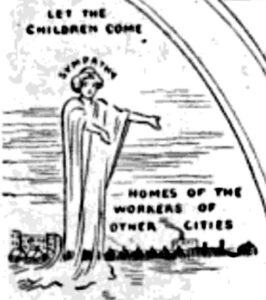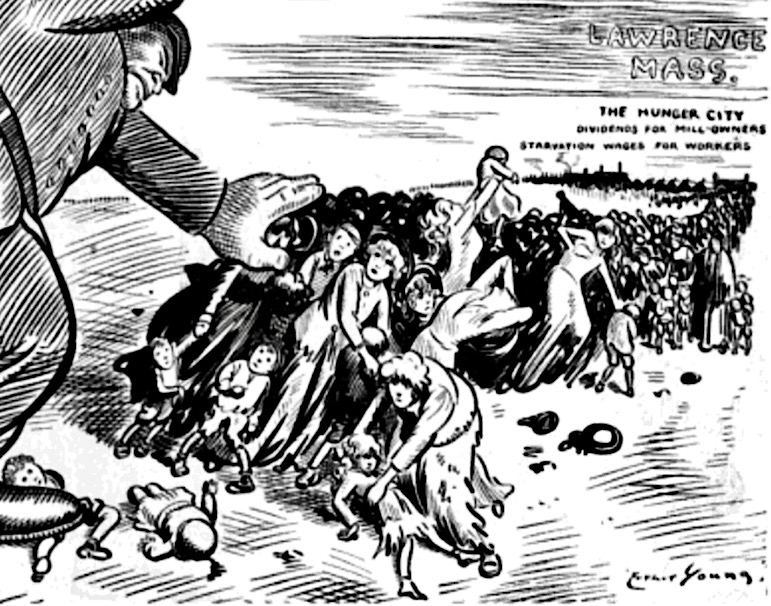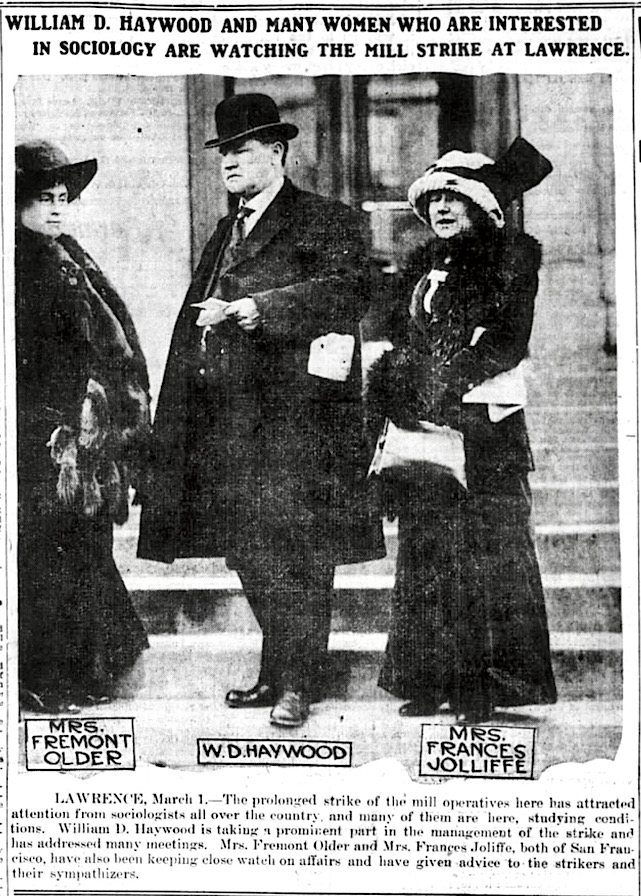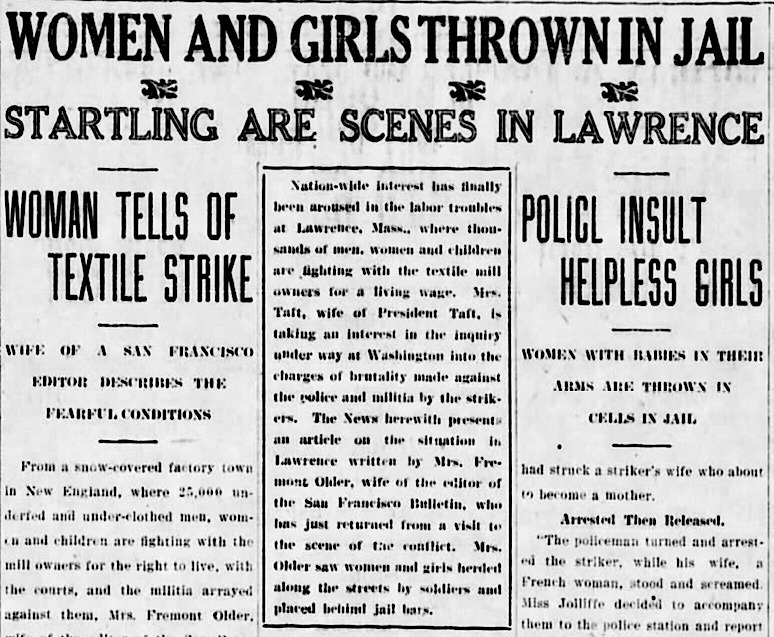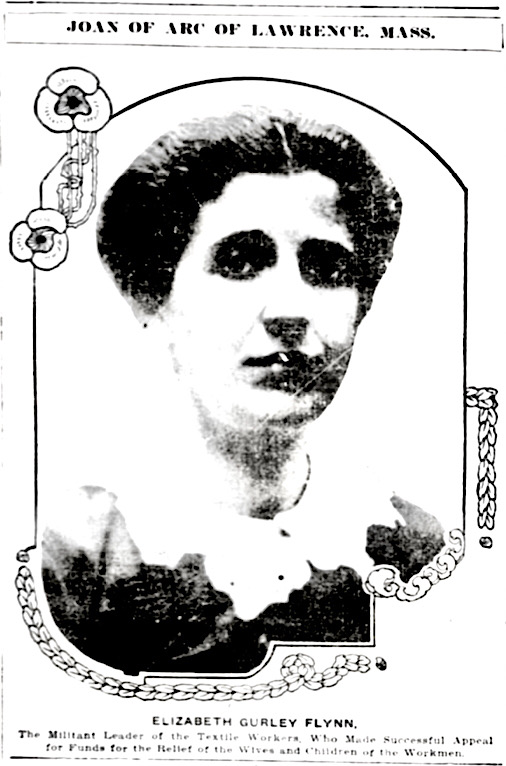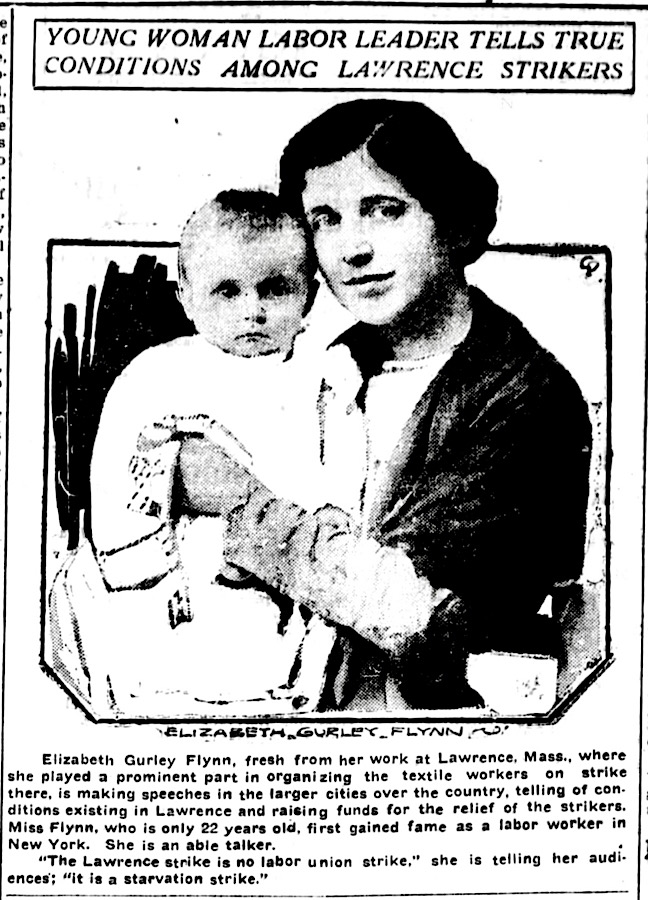 —————
—————
Hellraisers Journal – Saturday March 16, 1912
Washington, D. C. – Lawrence Children Appear Before House Committee
From the Everett Labor Journal of March 15, 1912:
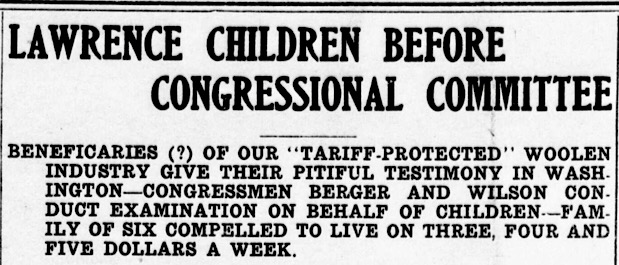
———-
(Republished from Los Angeles Citizen.)
“The chill hand of charity” got a severe slap a few days ago when Congressman Victor Berger grabbed a bill from a hat that was being passed for the benefit of the child textile strikers from Lawrence, Mass., who appeared before the house committee on rules, and hurled it into the face of its donor, J. H. Cox, a mill owner of Lawrence.
“We don’t want your money; it’s blood money,” cried Berger, indignantly. “We’ll take care of our own without your help.”
If it were possible to Bergerize the public conscience and cast the frown of public disapproval on the Cox kind of charity—the bribe of industrial bandits to satisfy society—Lawrence episodes would become less frequent.
In the same room in which only a month or so ago Andrew Carnegie complained bitterly because he had been paid only $320,000,000 for his properties by the steel corporation; where Judge Gary confided to a committee from congress that the steel trust had $75,000,000 in cash always ready to meet an emergency, child strikers in the mills at Lawrence laid bare their scars to pitying congressmen.
Presented by Representative Berger as an exhibit of what “one of the most highly protected industries in America does to human life by which it is served,” thirteen sallow-cheeked, thin-lipped, hollow-eyed, poorly-clad children, and six adults marched up Pennsylvania avenue and filed solmenly into the capitol.
In the room where attendants hurried to wait upon the smallest wish of Carnegie, Gary and Schwab, nobody had arranged for the comfort of these “exhibits” and they stood along the wall until Representative Henry, accompanied by his own little son, of eight, took pity on their plight.
“Get chairs for these children,” commanded Judge Henry. “Arrange them any way you want and take your time,” he added to Mr. Berger.
Before the witnesses began Chairman Wilson of the committee on labor pleaded for a federal investigation on the ground that in refusing to permit children to leave Lawrence several days ago the state authorities had violated the federal law.
Continue reading “Hellraisers Journal: From The Labor Journal: Children of Lawrence Strikers Appear before Congressional Committee” →
 —————
—————Elizabeth Gurley Flynn, the New York Girl Who Went to Jail

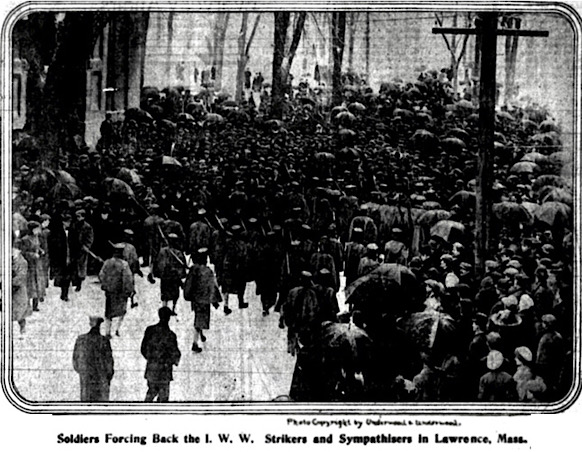
 —————
—————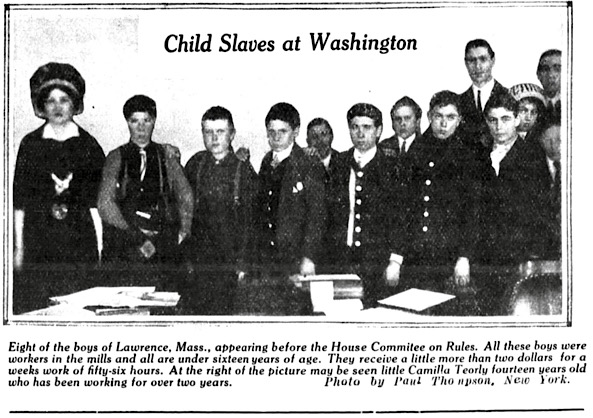


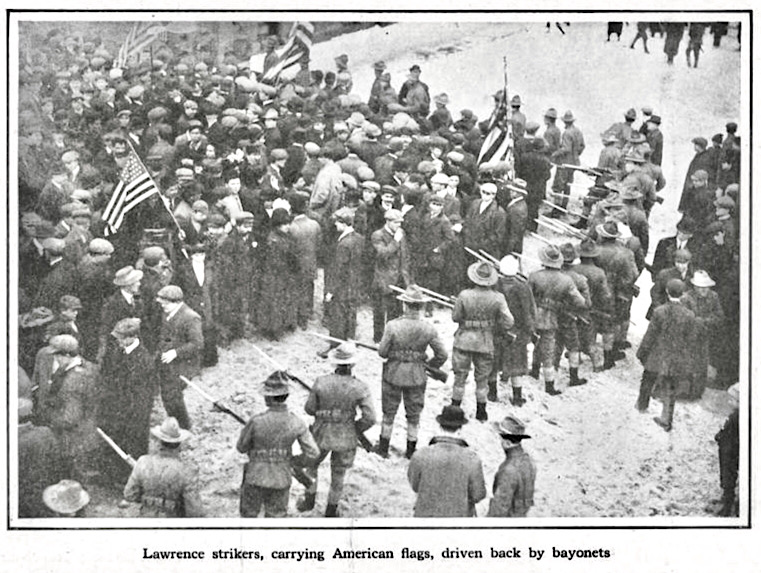

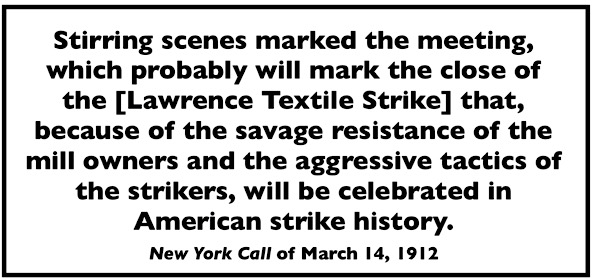 —————
—————
